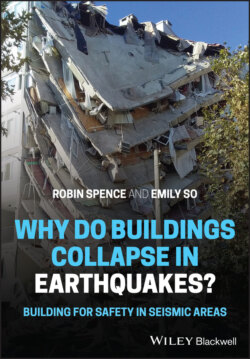Читать книгу Why do buildings collapse in earthquakes? Building for safety in seismic areas - Robin Spence - Страница 12
1.3 The Authors' Experience of Earthquake Risk Assessment
ОглавлениеThe overall aim of our work over four decades at the University of Cambridge's Department of Architecture and at Cambridge Architectural Research Ltd has been to understand the vulnerability of buildings to earthquakes globally, in order to estimate the damage which is likely to occur from future earthquakes. This knowledge can be used to provide a sound basis to improve the building stock, and reduce damage, loss of life and disruption from future earthquakes. We have developed our knowledge of building vulnerability through a series of collaborative research projects, supported by the European Union and the UK Government and Research Councils, and through work for individual cities, companies managing portfolios of buildings and insurance companies. But the primary source of our knowledge and experience of buildings’ behaviour in earthquakes has been post‐earthquake field missions. We have been involved in EEFIT, the UK's Earthquake Engineering Field Investigation team, since it was founded in 1982, and have between us participated in field missions in Japan, Italy, Turkey, India, Pakistan, Peru, Indonesia, China, New Zealand and the South Pacific. The detailed nature and aims of these field missions are discussed in Chapter 2: but an essential element in all cases is to describe and document the types of building affected and the types of damage observed.
Successive projects have examined in detail the problems of particular regions. In the 1980s, we examined the traditional stone‐masonry construction of rural Eastern Turkey and conducted shake‐table tests in Ankara to investigate simple ways to reduce their vulnerability, the cause of many deaths in earthquakes of the previous decade. In the 1990s, we investigated the options for protecting historic European cities such as Lisbon and Naples from likely future earthquake damage, and we looked at the performance of buildings which had been strengthened following previous earthquake damage. We also developed a method for assessing human casualties from earthquakes based on the level of building damage, and with colleagues in New Zealand applied this to the city of Wellington.
Since 2000 we have worked with others to develop loss modelling approaches to estimating damage and casualties, on a city‐scale (in EU collaborative projects), for insurance companies, or with the US Geological Survey, for rapid post‐disaster damage assessment. And we have applied our knowledge to assist organisations with large portfolios of buildings to identify those which should be upgraded.
We have also worked with teams developing new ways to assess earthquake damage using remote sensing, and led the team developing the Earthquake Consequences Database (So et al. 2012) for the Global Earthquake Model (GEM). And we have applied similar approaches to assessing vulnerability and damage to buildings from other natural hazards such as windstorms and volcanic eruptions. All this work is described in detail in technical project reports and published papers, referred to in the chapters which follow.
